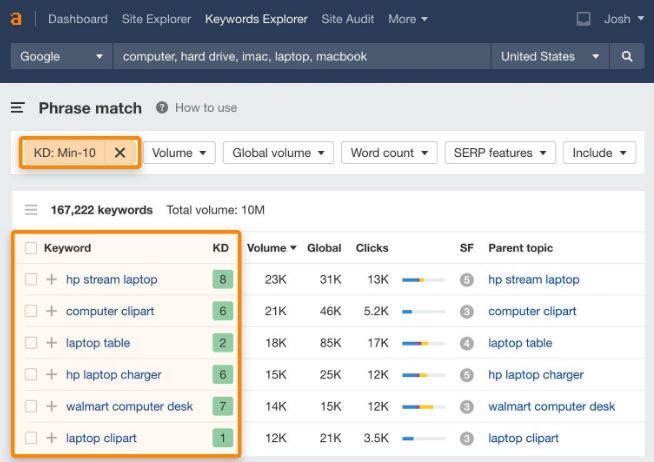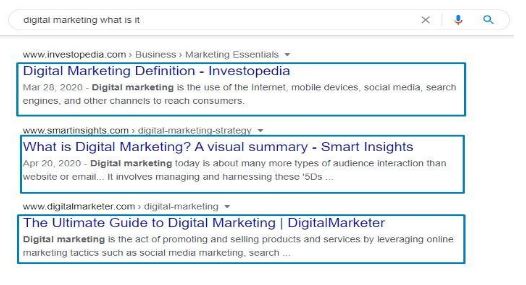
Why is SEO strategy vital, and what does it entail?
An SEO strategy seeks to improve a website’s ranking in search results so that it can attract more organic traffic. Successful SEO marketing techniques increase your email subscribers, promote your company on social media, and show it to searchers at every stage of the customer journey. As a result, clients eventually get to know and trust your company regardless of where they are in the purchasing process. Moreover, your strategy will ensure you produce material people search for rather than simply creating what you believe they want to read.
On the other hand, if your content is disjointed and disorderly, it will be low-ranked and won’t appear on the first page of Google search results.
How do you strategically optimize content?
Because Google Search is the most reliable, trustworthy, and high-quality traffic source on the internet, a content optimization strategy is essential. According to the Research, 68% of all online interactions start with a search engine query.
However, the key is to start at the top before considering how to gain subscribers for your business. So, let’s look at the many SEO content optimization techniques you can use to increase website traffic consistently.
1. Select the Appropriate Keyword
Keyword research is the cornerstone of any content optimisation plan. Finding meaningful, highly trafficked keywords around which to build your content is the aim of keyword research. Additionally, optimizing for a keyword no one uses is useless, so you should ensure it matches your intended audience’s search intent.
You can visit Ahrefs’ Keywords Explorer as well. It has several different features, such as keyword analysis, Research on a topic, analysis of backlinks, SEO audit findings and much more.
Hit Search after entering one or more broad keywords associated with your subject. You can find almost 64,000 keyword suggestions with search volumes, Keyword Difficulty (KD), and other helpful information.

Secondly, to locate “low-competition” keywords, filter the Phrase
Match report for keywords with a KD score between 0 and 10.

2. Create a Structure
A mind map helps organize your structure and simplify complex subjects. Start by using your primary keyword. Determine five or more essential topics you must address, depending on the article’s length, which will break into your H2 headings. To find unique outlines, you can use programs like Writesonic or Frase.
Now, list the points you want to make under each subtopic in bullet form. These may be paragraphs or H3 headings, depending on the level of detail you wish to go into. Continue breaking things down into H4s if your issue is incredibly intricate.
The advantages of breaking down your topic are that it improves readability, and section headings make it much simpler for search engines to comprehend what’s essential in your piece.
3. Optimize Image and Multimedia Content
When it comes to making your material more interesting and keeping visitors on your website longer, images, and other forms of multimedia are essential. Captivating visuals draw humans in, and we use that attention to comprehend better the message it is trying to express as well as the source of that message. According to a study, web material with visual elements, such as photographs or videos, performs better and gets up to 94% more views on average.
When developing content, try to include several screenshots, and creative videos. Use your goal keyword in the alt text of your screenshots and image files to optimize them.
4. Link both internally and externally
One of the most crucial SEO techniques is internal linking and external linking. Internal links to your website’s other pertinent pages are critical for transferring search authority and improving your site’s position. On each page, use three to four relevant internal links.
Furthermore, include links to any trustworthy outside sources to support your arguments and give your writing more authority.To identify the best external links for your topic, utilize Moz Link Explorer.
5. Avoid Cannibalization
When you optimize many pages or URLs on your website for the same keyword, this practice is known as keyword cannibalization. This causes your content to compete with itself in the eyes of search engines, which can hurt your rankings and visitors. By doing this, you’re requesting Google to compare your pages to one another and decide which ones best match the relevant keywords.
For instance, imagine that [shoes] are the only keyword you target and your website offers. In essence, you’re instructing Google that all pages are about shoes, regardless of whether they are sneakers, tennis shoes, hiking shoes, women’s or men’s shoes. This may negatively impact your SEO.
6. Page Meta Description Optimization for Conversions

A page’s meta description, located in the <head> section, is frequently but only sometimes shown in a SERP snippet along with the page’s title and URL.
The meta description aims to persuade users to click on your website in Google’s search results so it can increase your click-through rates (CTRs). Therefore, it develops a compelling summary that piques the searchers’ attention and draws them to your material.
7. Update your content regularly
Your competitors will continue to work long after you have finished writing and released your content, so your content should remain fresh. One of the best ways to gauge a site’s relevance is by how frequently its information is updated, so make sure to do it.
The title, title tag, subheadings, anchor texts, and links on your page can all be reviewed and altered. Every month, do not forget to audit your material and make any necessary updates, as Gluz Digital has been doing.
8. Include intriguing calls to action
CTAs are the most crucial part of your content, mainly when the objective is to encourage readers to take action. You should ensure it is strategically placed, attractively designed, and aligned with your content’s goals.
To turn readers into subscribers and leads, place CTA at the end of the page, in the center of your content, and after the introduction. Use sliders, pop-ups, and other lead-creation strategies to boost conversions. Any SEO strategy must have a good CTA because it can increase website engagement and search engine rankings.
Developing a content optimization strategy is a piece of cake. However, it calls for high-quality content, keyword research strategies, and a thorough understanding of your audience’s needs. You’ll succeed in producing the most outstanding SEO content by following the steps above and having a solid work plan.